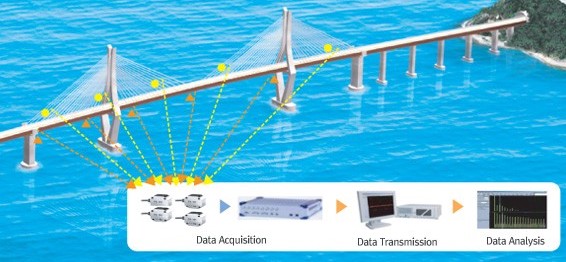STRUCTURAL HEALTH MONITORING SYSTEMS
We are one of the best engineering company providing advanced solutions for structural health monitoring (SHM) and condition based maintenance (CBM) of high value assets, including bridges, large buildings, and heavy equipment, helicopters, pipelines, ships, and wind turbines. Incorporating advanced MEMS-based embedded sensor technologies, low-power wireless data acquisition nodes, and state of the art diagnostics and prognostics software, our application specific systems monitor and quantifies corrosion and stress related fatigue effects in order to predict the health status of the structure. Total cost of ownership for the asset is reduced while extending the life-cycle of critical structures through improved CBM schedules. Our systems are used for both experimental and operation modes of operation.
We are one of the best engineering company providing advanced solutions for structural health monitoring (SHM) and condition based maintenance (CBM) of high value assets, including bridges, large buildings, and heavy equipment, helicopters, pipelines, ships, and wind turbines. Incorporating advanced MEMS-based embedded sensor technologies, low-power wireless data acquisition nodes, and state of the art diagnostics and prognostics software, our application specific systems monitor and quantifies corrosion and stress related fatigue effects in order to predict the health status of the structure. Total cost of ownership for the asset is reduced while extending the life-cycle of critical structures through improved CBM schedules. Our systems are used for both experimental and operation modes of operation.

Software Suite for Structural Health Monitoring
SPAS (Structural parameter analysis software) are the end-user software tool to interface the SHM hardware modules developed by Senpronics, the software works in tandem with our sensors and hardware to detect and characterize structural anomalies in metals and composites due to the presence of cracks, corrosion, debonds, and delaminations. With the push of a button, our software instructs the hardware to interrogate the structure by collecting data. The software analyzes the data and presents the results in a clear, easy-to-understand display. The main functionality of SPAS is to:
SPAS works with the SHM system supporting the standard tiny OS. When installed on a host PC, SPAS can connect to an SHM system directly using a wireless network.

